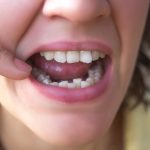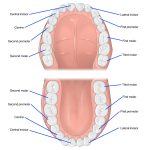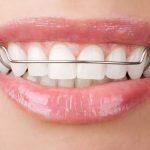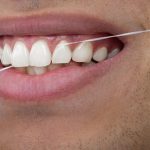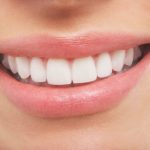Brace Yourself for a Brighter Smile: How to Get Whiter Teeth with Braces
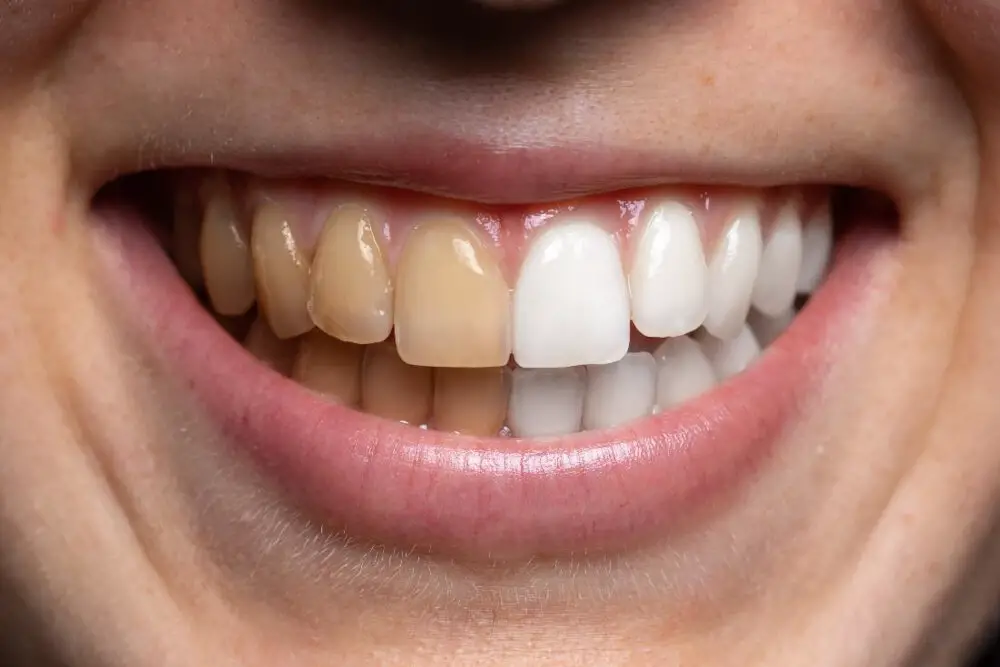
Having straight teeth is a dream for many, but what about having straight and white teeth? Braces are an excellent orthodontic solution, but they can make it challenging to maintain a white smile. Many people think that they have to wait until after their braces are removed to whiten their teeth, but this is not the case. There are several ways to get whiter teeth while wearing braces, and in this article, we will explore some of the best methods. Braces are a significant investment in time, money and effort, but they are worth it in the long run. However, it’s essential to take care of your teeth and braces properly to ensure that the end result is as beautiful as you imagined. While braces can make it more challenging to maintain good oral hygiene, there are ways to overcome this. By incorporating some simple techniques into your daily routine, you can keep your teeth clean and healthy, and achieve a brighter smile at the same time. So, let’s dive into the world of teeth whitening and braces and learn how to get that perfect, white smile you’ve always wanted.
People with braces may experience discoloration due to the accumulation of plaque and food particles that are not properly cleaned from their teeth and braces. This can result in yellow or brown stains on the teeth, which can be unsightly and cause embarrassment. Additionally, because braces cover a significant portion of the teeth, it can be difficult to whiten the areas that are covered by brackets and wires. This can lead to uneven whitening and a desire for a brighter, more uniform smile. With proper care and the right techniques, however, it is possible for people with braces to achieve whiter teeth and overcome the challenges associated with orthodontic treatment.
Maintaining good oral hygiene during orthodontic treatment is crucial to achieving a brighter smile. With braces, food particles and plaque can easily accumulate around the brackets and wires, leading to tooth decay and gum disease. Regular brushing and flossing, along with the use of interdental brushes and mouthwash, can help remove these harmful substances and prevent the buildup of bacteria in the mouth. Additionally, orthodontic patients should avoid sugary and sticky foods that can cling to the braces and cause further damage. By taking care of their oral health during treatment, patients can ensure that their teeth remain healthy and beautiful long after the braces are removed.
Brushing and Flossing Techniques
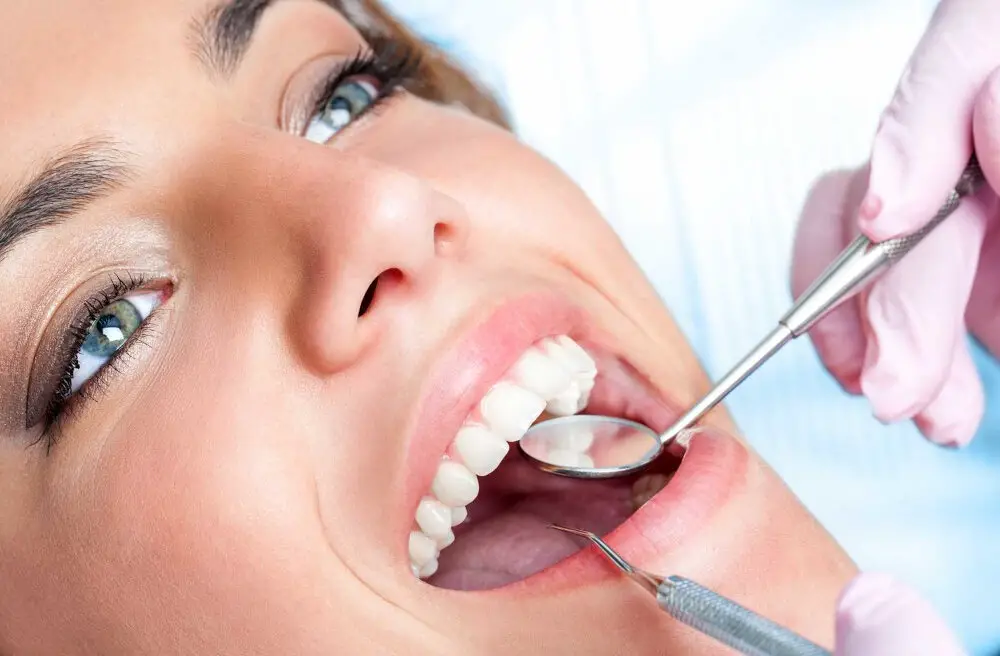
Taking care of your oral health is essential when you have braces. The goal is not just to straighten your teeth, but also to maintain healthy gums and teeth. Brushing is an essential part of your oral hygiene routine, and with braces, it’s even more important. When you have braces, it’s easy for food particles to get stuck in the brackets and wires, leading to an accumulation of plaque and bacteria. Therefore, it’s crucial to brush your teeth after every meal to remove any food particles and plaque. Use a soft-bristled toothbrush and fluoride toothpaste to brush your teeth gently in a circular motion. Don’t forget to brush the brackets, wires, and gums to remove any food particles or plaque that may have accumulated. Flossing is equally important, as it helps remove plaque from areas that a toothbrush can’t reach. With braces, traditional flossing methods may be difficult to use. Therefore, you may want to consider using a floss threader or interdental brush to make flossing easier. Floss at least once a day, preferably before bedtime, to remove any food particles or plaque that may have accumulated throughout the day. Don’t forget to make a conscious effort to floss between each tooth and under each bracket wire. By adopting proper brushing and flossing techniques, you can maintain healthy gums and teeth, and ultimately achieve a brighter, healthier smile.
Proper brushing and flossing techniques are essential for maintaining a healthy and bright smile, especially when wearing braces. To prevent staining and discoloration, it is recommended to brush your teeth at least twice a day for two minutes each time using a fluoride toothpaste and a soft-bristled toothbrush. Be sure to brush all the surfaces of your teeth, including the front, back, and chewing surfaces, as well as your braces and wires. Flossing should be done at least once a day, using a floss threader or specialized orthodontic floss to get in between the wires and brackets. By following these brushing and flossing techniques, you can ensure that your teeth and braces stay clean and free from staining and discoloration, leading to a brighter, more confident smile.
Using fluoride toothpaste and mouthwash is crucial for maintaining good oral health and getting a brighter smile while wearing braces. Fluoride is a natural mineral that strengthens tooth enamel, making it more resistant to decay and cavities. When you wear braces, food particles can easily get trapped in the brackets and wires, leading to plaque buildup and tooth discoloration. Fluoride toothpaste and mouthwash help to combat this by protecting and strengthening your teeth. Additionally, using fluoride products can help to prevent the development of white spots on your teeth that can occur during orthodontic treatment. Overall, incorporating fluoride toothpaste and mouthwash into your daily oral hygiene routine is a simple yet effective way to keep your teeth healthy and your smile looking bright and beautiful.
Cleaning hard-to-reach areas around braces can be a challenge, but it’s essential to maintain good oral hygiene and prevent any dental issues. One of the best tips is to invest in interdental brushes, which are small and flexible brushes that can easily get between the wires and brackets. Another helpful tool is a water flosser, which uses a stream of water to clean the spaces between teeth and around braces. Additionally, it’s crucial to brush and floss regularly, paying extra attention to areas that are difficult to reach. By following these tips and being diligent with your oral hygiene, you can keep your teeth and braces clean, healthy, and bright.
Foods and Beverages to Avoid
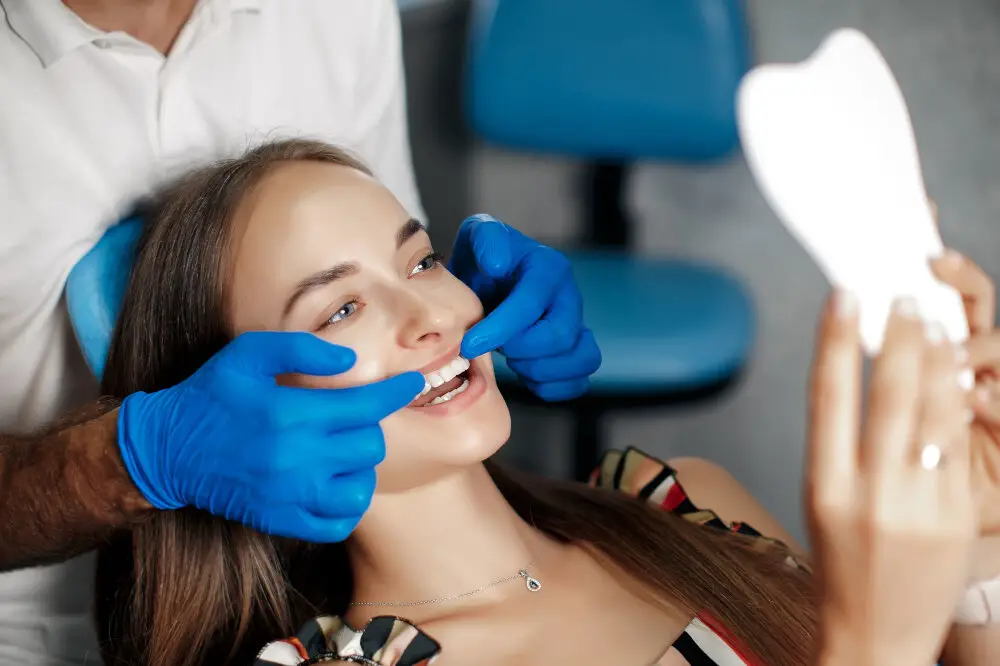
When undergoing orthodontic treatment with braces, it is important to be mindful of the foods and beverages you consume. Certain foods can cause damage to the brackets, wires, or even your teeth, which can prolong your treatment time and delay your progress towards a brighter smile. Sticky and chewy foods such as caramel, gummies, and taffy should be avoided as they can easily get stuck in the brackets and wires, making it difficult to clean and increasing the risk of tooth decay. Hard and crunchy foods such as popcorn, nuts, and hard candy should also be avoided as they can cause brackets and wires to break or come loose, causing discomfort and prolonging treatment time. Additionally, beverages such as soda, sports drinks, and fruit juices should be avoided as they are high in sugar and can erode the enamel on your teeth, leading to tooth decay and discoloration. Coffee, tea, and red wine can also stain your teeth, so it is best to limit consumption or use a straw to prevent direct contact with your teeth. Water is the best option for staying hydrated and keeping your mouth healthy during orthodontic treatment. By avoiding these foods and beverages, you can help ensure a successful orthodontic treatment and a brighter, healthier smile.
Brace wearers should be mindful of their food and beverage choices as some can cause staining and discoloration of teeth. Dark-colored beverages like coffee, tea, and red wine contain chromogens that stick to the enamel, leading to unsightly stains. Highly acidic drinks like sports drinks, fruit juices, and soda can erode the enamel, making teeth more prone to discoloration. Foods with strong pigments like berries, beets, and tomato sauce can also cause staining. Additionally, sticky and sugary foods can get trapped in between teeth and braces, promoting bacterial growth and increasing the risk of plaque buildup and tooth decay. To maintain a brighter smile while wearing braces, it’s best to avoid or limit these foods and beverages and prioritize a healthy, balanced diet.
Tooth enamel is the hard, outer layer of the teeth that protects against decay and damage. However, certain foods and drinks can erode this protective layer, leaving the teeth vulnerable to cavities and other dental issues. Acidic foods and drinks such as citrus fruits, soda, and vinegar-based dressings can wear down enamel over time, while sugary foods like candy and soft drinks can lead to tooth decay. It’s important to limit consumption of these types of foods and drinks, and to brush and floss regularly to maintain good oral health while wearing braces.
Limiting the consumption of staining foods and beverages is crucial when it comes to maintaining a brighter smile with braces. Foods and drinks such as coffee, tea, red wine, and berries contain chromogens that can easily adhere to the surface of teeth and cause discoloration. Acidic foods and drinks like citrus fruits and soda can also weaken the enamel and make teeth more susceptible to staining. Therefore, it is important to minimize the intake of these foods and beverages, or at least rinse your mouth with water after consuming them, to prevent stains from developing on your teeth while you have braces. By doing so, you can ensure that your teeth remain healthy, strong, and bright throughout your orthodontic treatment and beyond.
Whitening Products for Braces

When it comes to achieving a brighter smile with braces, there are various whitening products available in the market that can help you achieve the desired result. One of the most popular products is whitening toothpaste. These toothpaste work by removing the surface stains on the teeth caused by food and drinks. However, it’s important to note that whitening toothpaste cannot change the color of the actual braces or the color of the teeth underneath the brackets. Therefore, it’s essential to maintain good oral hygiene to prevent any discoloration around the braces. Another popular whitening product for braces is whitening strips. These strips are placed over the teeth, including the brackets, and work by releasing a bleaching agent that removes surface stains. Whitening strips are easy to use and provide a noticeable difference in just a few uses. However, it’s important to follow the instructions carefully and not to leave the strips on for too long, as this can cause sensitivity and damage to the teeth. Additionally, it’s important to note that whitening strips may not be suitable for everyone, especially those with sensitive teeth or gum problems. It’s always best to consult your dentist before using any whitening products.
Braces are a popular orthodontic treatment that helps to straighten and align teeth, but they can also make it challenging to maintain a bright and white smile. Fortunately, there are several whitening products specifically designed for use with braces that can help to remove stains and discoloration caused by food and drink. These products include whitening toothpaste, mouthwash, and even whitening strips that can be applied directly to the teeth. Some products are formulated to work around the brackets and wires of the braces, while others are designed to be used in conjunction with removable aligners. With so many options available, it’s easy to find a whitening product that can help you achieve the smile you’ve always wanted, even while wearing braces.
Braces are orthodontic appliances that consist of brackets, wires, and bands that are attached to the teeth to straighten them. Teeth whitening products work by removing surface stains and discolorations from the teeth, giving them a brighter and more youthful appearance. When used together, braces and teeth whitening products can help you achieve a beautiful and confident smile. The brackets and wires of braces can make it difficult to keep your teeth clean, leading to the buildup of plaque and stains. By using teeth whitening products, you can remove these stains and keep your teeth looking their best. Additionally, having straighter teeth can make it easier to clean them and maintain good oral hygiene, which can lead to better overall health.
When using whitening products with braces, it is essential to take some precautions to avoid damaging your teeth and braces. Firstly, avoid using any whitening products that contain hydrogen peroxide or carbamide peroxide, as they can harm your braces by corroding the metal. Instead, opt for a non-peroxide whitening product that is safe to use with braces. Additionally, be sure to brush and floss thoroughly before applying any whitening product to remove any food particles that may be trapped in your braces. It is also recommended to use a soft-bristled toothbrush and a fluoride toothpaste to minimize any damage to your braces. Lastly, follow the instructions carefully and do not leave the whitening product on for longer than recommended to avoid any adverse effects. By taking these precautions, you can safely and effectively whiten your teeth while wearing braces.
Professional Whitening Options
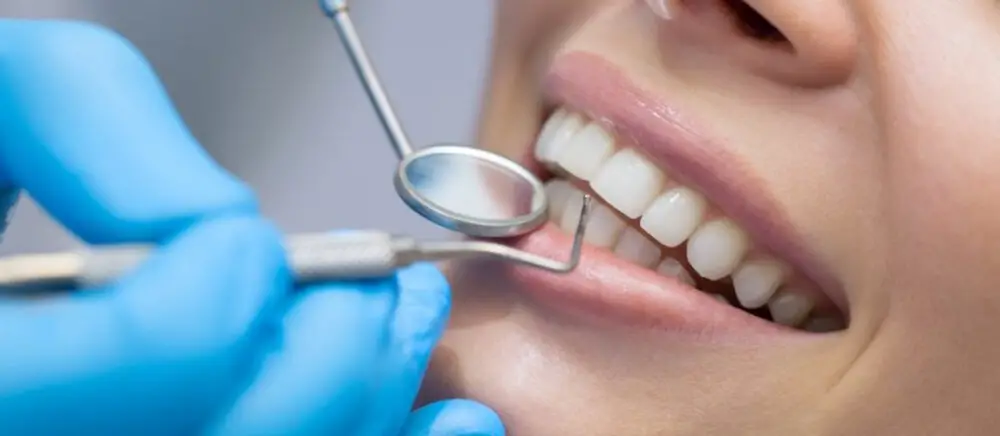
Achieving a brighter smile can be a daunting task, especially if you have braces. Thankfully, professional whitening options are available to help you get the results you desire. One popular option is in-office whitening, which involves a dentist applying a bleaching agent to your teeth and using a special light to activate it. This treatment typically takes less than an hour and can result in teeth that are several shades lighter. While in-office whitening can be more expensive than other options, it is often the most effective and long-lasting. Another professional whitening option is take-home whitening kits, which are available from your dentist. These kits include custom-fitted trays and a bleaching agent that you apply at home. While take-home kits may take longer to achieve results than in-office whitening, they are often more convenient and cost-effective. Your dentist can provide guidance on which option is best for you based on your specific needs and goals. With professional whitening options, you can achieve a brighter, more confident smile even while wearing braces.
For those with braces who desire a brighter smile, there are a variety of professional whitening options available. One option is in-office bleaching, which involves the application of a high-strength bleaching gel to the teeth, typically followed by a light or laser to activate the gel. Another option is at-home tray whitening, in which custom-fitted trays are filled with a bleaching solution and worn for a specified amount of time each day. However, it is important to note that whitening with braces can be challenging, as the brackets and wires can make it difficult to fully whiten all areas of the teeth. Additionally, some whitening methods may not be recommended for those with sensitive teeth or teeth that are already weakened by decay or other damage. Consulting with a dental professional is crucial to determine the best whitening option for each individual with braces.
When it comes to teeth whitening treatments, there are two main options to consider: in-office and at-home. In-office treatments are typically done by a dentist and involve a powerful bleaching agent applied to the teeth. This treatment usually takes about an hour and can lighten teeth by several shades. In contrast, at-home treatments involve using whitening products that can be purchased at a drugstore or through a dentist. These treatments can include whitening strips, trays, or gels that are applied to the teeth for a period of time each day. While at-home treatments may take longer to achieve desired results, they are generally more affordable and convenient for those who cannot make frequent trips to the dentist. Ultimately, the choice between in-office and at-home whitening treatments will depend on individual preferences and needs.
One of the primary advantages of getting braces to whiten your teeth is that they are a long-term solution. Unlike teeth whitening treatments, which require regular maintenance and touch-ups, braces can provide permanent results. Additionally, braces can correct other dental issues, such as crooked teeth, uneven spacing, and bite problems, which can improve overall dental health. However, there are also some downsides to consider. Braces require a significant investment of time, money, and effort, and they can be uncomfortable or even painful at times. Additionally, braces may limit certain foods, such as sticky or hard items, and require extra care when brushing and flossing to avoid tooth decay. It is important to weigh both the pros and cons before deciding if braces are the right choice for your dental needs.
Maintaining good oral hygiene during orthodontic treatment is of utmost importance for achieving a brighter smile. Wearing braces can make it challenging to clean teeth and gums properly, leading to the buildup of plaque and bacteria, which can cause tooth decay and gum disease. Regular brushing with fluoride toothpaste, flossing, and using an antibacterial mouthwash can help to keep teeth clean and healthy during orthodontic treatment. Additionally, avoiding sugary and acidic foods, along with regular visits to the dentist, can help to prevent any complications and ensure a successful outcome. By committing to good oral hygiene habits, individuals can enjoy a more confident and brighter smile once their orthodontic treatment is complete.
If you’re currently wearing braces and are looking to achieve a brighter, whiter smile, don’t hesitate to put the tips and techniques outlined in this article into practice. With a little bit of effort and dedication, you can make a significant difference in the appearance of your teeth. From maintaining good oral hygiene habits and using whitening products specifically designed for braces, to making dietary changes and visiting your orthodontist regularly, every step you take towards a brighter smile will bring you one step closer to achieving your goal. Remember, the key to success is consistency, so stick with it and you’ll be amazed at the results you can achieve.
Conclusion
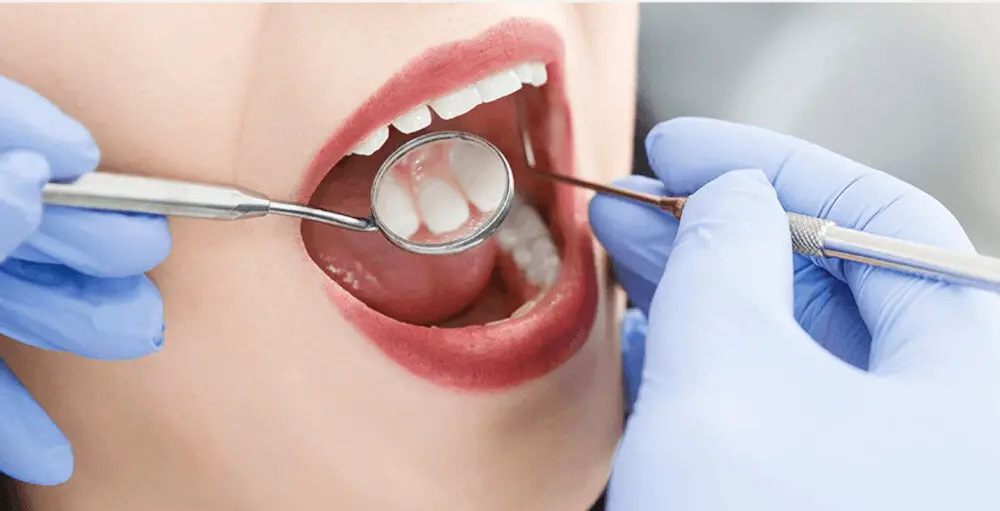
In conclusion, having braces does not mean sacrificing a bright and beautiful smile. With the right techniques and maintenance, achieving pearly white teeth is possible even with orthodontic appliances. From practicing good oral hygiene habits to avoiding certain foods and beverages, there are various steps you can take to ensure your teeth remain healthy and vibrant throughout your orthodontic treatment. Additionally, consulting with your orthodontist and investing in professional teeth whitening treatments can also help you achieve the stunning smile you desire. So, brace yourself for a brighter smile and take action to keep your teeth healthy and white throughout your orthodontic journey.

